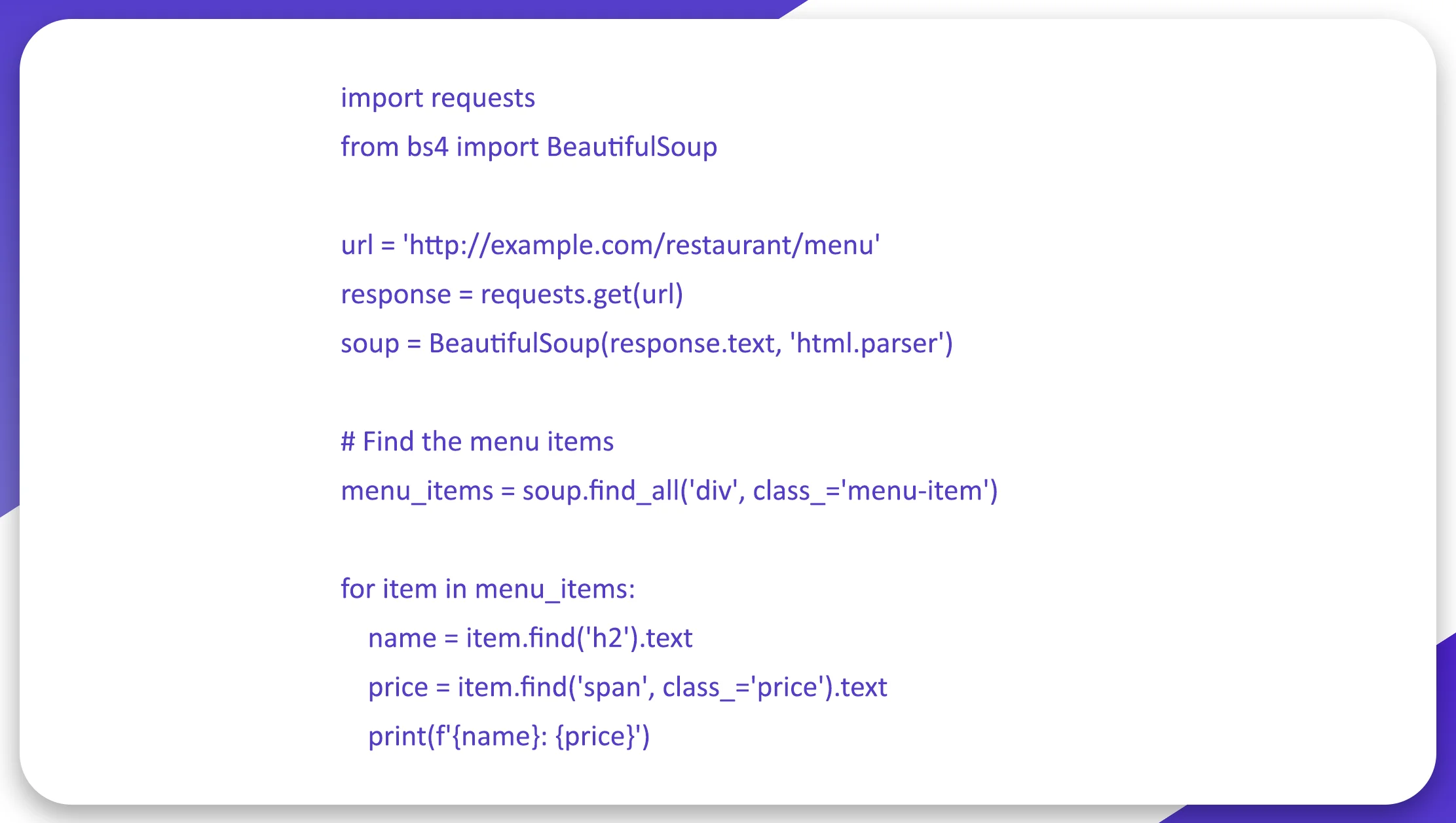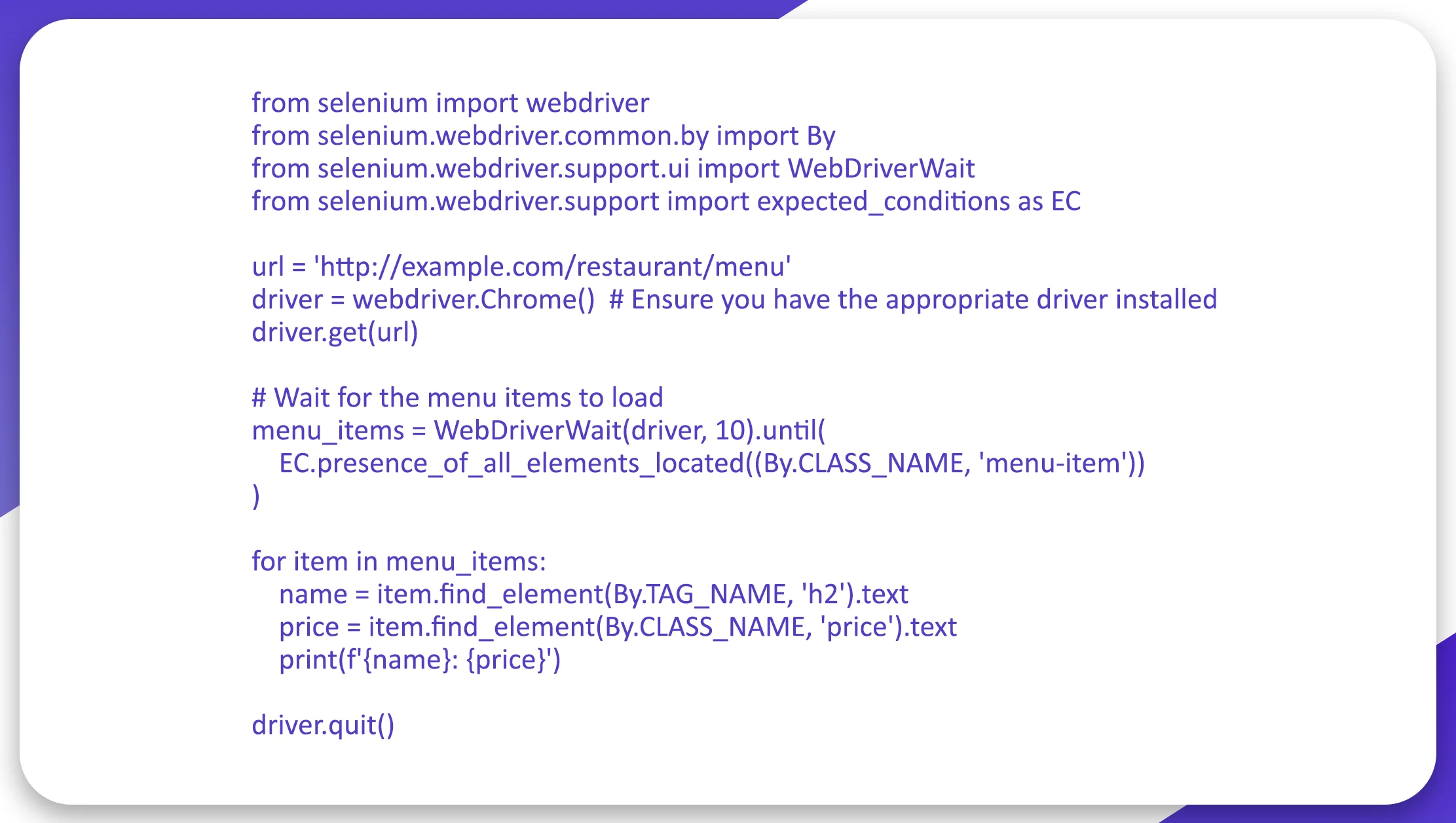Web Scraping Food Delivery Data - A Comprehensive Guide

Introduction
In the digital age, food delivery services have surged in popularity, transforming how we dine and how businesses operate. Whether you're an entrepreneur looking to break into the food delivery market, a data analyst conducting market research, or a developer building a price comparison tool, accessing and analyzing food delivery data is crucial. This guide will walk you through the ins and outs of web scraping food delivery data, from the basics to advanced techniques and best practices.
Introduction to Web Scraping Food Delivery Data

In today's fast-paced digital world, the food delivery industry has experienced exponential growth. As businesses strive to understand market trends, customer preferences, and competitive landscapes, web-scraping food delivery data has become an invaluable tool. This process involves extracting data from food delivery websites to gather insights that drive informed decision-making.
Web scraping food delivery data is essential for various applications. Whether you're an entrepreneur aiming to break into the food delivery market, a data analyst conducting market research, or a developer building a price comparison tool, scraping this data is crucial. By leveraging web scraping services, you can automate the process of collecting and analyzing vast amounts of information quickly and efficiently.
A food delivery data scraper is a specialized tool designed to extract structured information from food delivery platforms. These scrapers can collect a wide range of data, including menu items, prices, restaurant ratings, delivery times, and customer reviews. The process of food delivery data collection involves sending HTTP requests to target websites, parsing the HTML content, and extracting the desired data elements.
One of the primary benefits of food delivery data extraction is the ability to perform competitive analysis and price comparison. Businesses can monitor their competitors' pricing strategies, identify market gaps, and adjust their offerings accordingly. Additionally, instant data scrapers enable real-time data collection, providing up-to-date insights into the food delivery landscape.
Using web scraping services for scraping food delivery data also aids in conducting comprehensive market research. By analyzing trends and patterns, businesses can better understand customer behavior, preferences, and emerging market opportunities. This data-driven approach enhances strategic planning and helps businesses stay ahead in the competitive food delivery industry.
Why Scrape Food Delivery Data?

In the rapidly evolving landscape of food delivery, having access to up-to-date and comprehensive data is critical for staying competitive and making informed decisions. Web scraping food delivery data offers numerous benefits for businesses and researchers alike, making it a valuable practice in the industry. Here are several key reasons to engage in food delivery data scraping:
Market Research
Conducting thorough market research is essential for understanding trends, customer preferences, and competitive dynamics. By scraping food delivery data, businesses can gather detailed information about popular dishes, peak ordering times, and customer demographics. This food delivery data collection helps identify emerging trends and opportunities, allowing companies to tailor their offerings to meet market demands effectively.
Price Comparison
Staying competitive in the food delivery market often involves closely monitoring competitors' pricing strategies. A food delivery data scraper can extract pricing information from multiple platforms, enabling businesses to conduct price comparisons and adjust their prices accordingly. This food delivery data extraction ensures that businesses remain competitive and attractive to cost-conscious customers.
Competitive Analysis
Understanding the strengths and weaknesses of competitors is crucial for strategic planning. Web scraping services can provide insights into competitors' menu items, delivery times, customer reviews, and promotional activities. By analyzing this data, businesses can identify gaps in the market and develop strategies to differentiate themselves.
Enhancing Customer Experience
Access to comprehensive data allows businesses to enhance the customer experience. For instance, instant data scrapers can provide real-time insights into delivery performance, helping companies optimize their logistics and reduce delivery times. Additionally, analyzing customer reviews and feedback can highlight areas for improvement, leading to higher customer satisfaction.
Data-Driven Decision Making
In today's data-centric world, making informed decisions based on accurate and timely information is vital. Scraping food delivery data provides a wealth of data that can be used to inform marketing strategies, product development, and operational improvements. This data-driven approach leads to more effective decision-making and better business outcomes.
Getting Started with Food Delivery Data Scraping

Tools and Libraries
To scrape food delivery data, you'll need the following tools and libraries:
Python: A versatile and widely used programming language for web scraping.
BeautifulSoup: A library for parsing HTML and XML documents.
Scrapy: A powerful and flexible web scraping framework.
Selenium: A tool for automating web browsers, useful for scraping dynamic content.
Requests: A library for sending HTTP requests.
Setting Up Your Environment
Install Python: Make sure Python is installed on your system. You can download it from python.org.
Install Libraries: Use pip to install the necessary libraries:
pip install beautifulsoup4 scrapy selenium requests
Basic Example: Scraping Menu Data
Let's start with a simple example: scraping menu data from a hypothetical food delivery website.

Advanced Techniques for Food Delivery Data Scraping
Handling Dynamic Content
Many modern websites load content dynamically using JavaScript. To scrape such sites, you can use Selenium.

Extracting Structured Data with Scrapy
Scrapy is ideal for more complex scraping tasks, such as scraping multiple pages or following links.

Storing and Analyzing Scraped Data
Once you have scraped the data, you need to store it for further analysis. Common storage options include:
CSV Files: Simple and easy to use with pandas for analysis.
Databases: Use SQLite, MySQL, or MongoDB for more complex data storage needs.
Cloud Storage: Store large datasets in cloud storage solutions like AWS S3.
Example: Storing Data in a CSV File

Conclusion
Web scraping food delivery data is a powerful technique that provides valuable insights for various applications. By leveraging advanced tools and techniques, you can efficiently collect and analyze data to inform your business decisions. Whether it's for market research, price comparison, or competitive analysis, the insights gained from food delivery data scraping can drive strategic, data-driven decision-making.
Real Data API offers robust web scraping services designed to streamline the process of food delivery data extraction. Our food delivery data scraper ensures accurate and comprehensive data collection, helping you stay ahead in the competitive market. Our instant data scraper provides real-time updates, enabling you to respond swiftly to market changes.